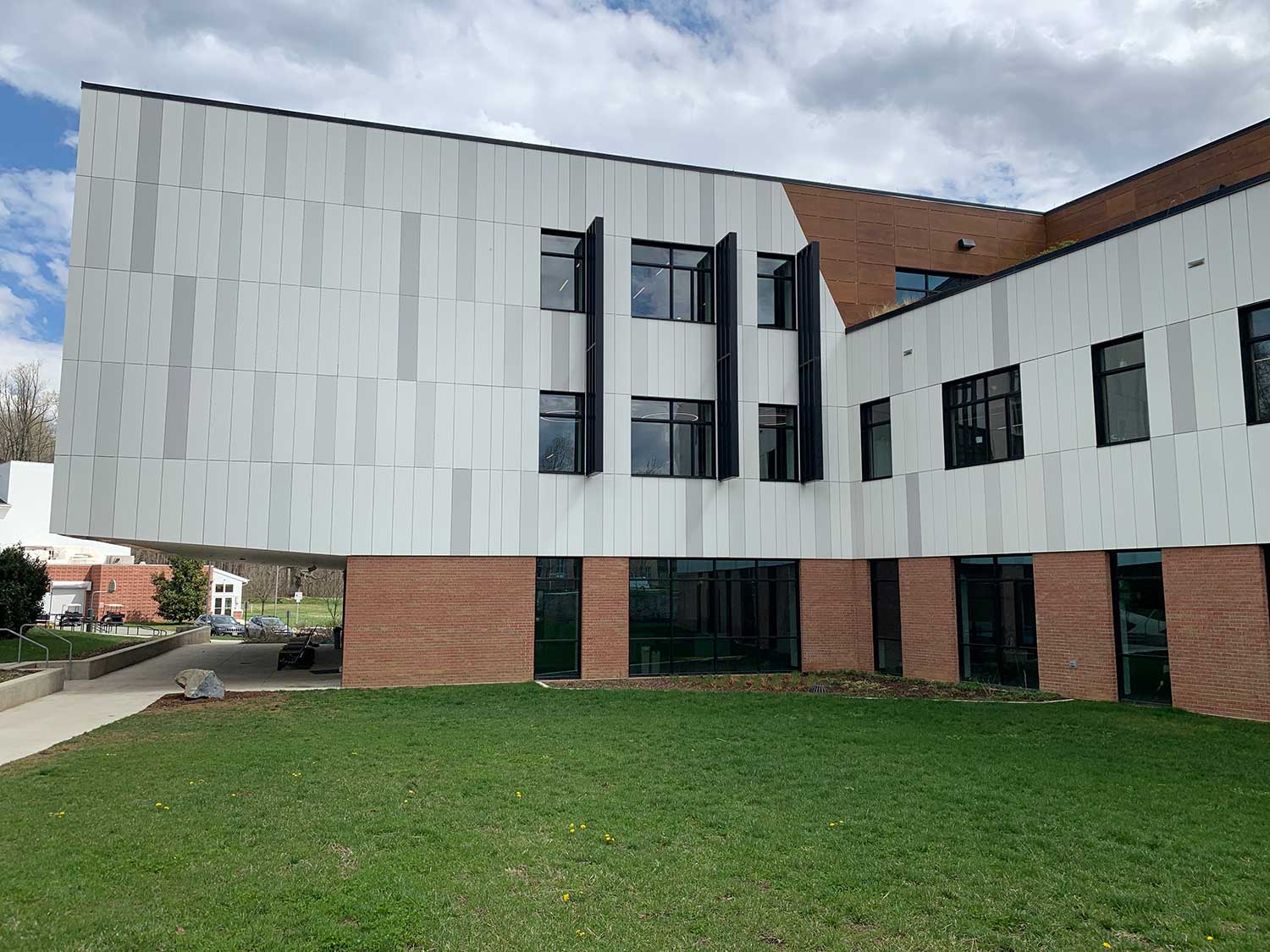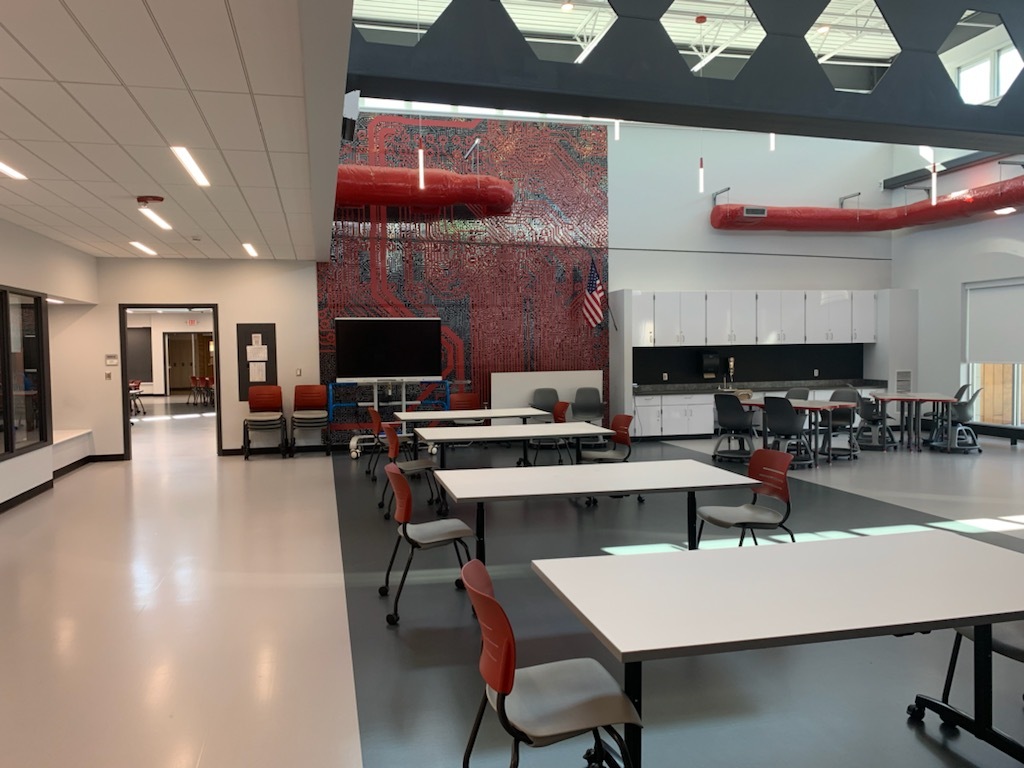Share This Story
I have always believed that good business begets good business. When we look to our competition for inspiration, we elevate our own design, and sequentially, develop more dynamic spaces for end users.
In the past several months, I’ve had the opportunity to go on school tours in Washington D.C. and Central New York as a member of and incoming New York State Chapter President of the A4LE (Association for Learning Environments). Through this organization, the K-12 education design community has one common goal: to lead innovation at the intersection of learning and place, and in which, the place is a catalyst for inspired learning. The A4LE looks to its members to elevate professional standards, enhance individual performance and identify those in the educational environment industry who demonstrate the core competencies essential to the practice of planning, designing, equipping and maintaining educational environments.
Accounting for School Values Through Design
While in Washington D.C. at the Northeast Regional conference this past April, I toured Sandy Springs School, a private Quaker School in Maryland.

Exterior of Sandy Springs School. Design firm: Stantec.
Guided by the project’s lead Architecture/Engineer (A/E) team and the school’s Director, we were welcomed to this new building, which recently received Well AP Silver certification due to its net-zero ready infrastructure, solar panel field, on-site composting and geothermal heating. The school’s architects and designers graciously explained their eight-year-long process, working with the support of key stakeholders to embrace the following Quaker values through design.
Belief that the truth is continually revealed.
Belief in seeking peace with oneself and others.
Belief in accepting and respecting each individual’s uniqueness.
Belief in the spirituality of life.
Belief in the value of simplicity.
Belief in the power of silence.
To support these values, their team worked to outfit the building with sustainable materials like linoleum flooring, reclaimed wood from the surrounding area and mineral wool insulation. Additionally, daylighting controls were designed through the application of custom sunshades and fins on the exterior, which were positioned to allow for the use of sunlight when it’s needed and deflect its power when it’s not.
Environmentally focused design elements were also integrated to create a building that is both thermally balanced for controlled heat and acoustically balanced for audibility and noise reduction. Total use of the building’s space was considered with the integration of breakout zones hugging the circulation areas, which permits individualized learning opportunities.
Furthermore, local artists provided sculptures for the soaring, open space within the interior, two-story volume as well as for the zen garden behind the building. The natural and simplistic beauty of the school’s design evokes a calming yet focused atmosphere for students and administrators.
Engaging with a School’s Community
On another school tour, we were led through a new addition at the Vernon Verona Sherrill Middle School, located in Verona, New York. Here, the school’s architect and Assistant Principal walked us through their intricate processes for community engagement. Working with key stakeholders, students, administrators and the community, they discovered that the school was most in need of a dedicated space to support learning goals more closely aligned to 21st-century workforce demands.

Interior space in Vernon Verona Sherrill Middle School. Design firm: King + King.
This resulted in a large, multi-functional Science, Technology, Engineering, Arts and Mathematics (STEAM) wing that bolsters the existing curriculum, inspires administrators to use innovative education practices and is also available for use by the school’s community. Primary design choices revolved around cross-disciplinary and project-based learning, which was achieved by the incorporation of a myriad of writable surfaces, flexible furniture selections, portable modular walls and the use of tasteful school branding elements.
Engaging design practices were also found in both the interior and exterior of the school. The surrounding patios and green spaces are now used by educators for diverse outdoor learning activities like drone flying and experimentation, and the interior lab and its four adjacent classrooms are utilized for after-school activities, community board meetings and local club gatherings.
Exploring Spaces Leads to Collaboration
The opportunity to observe these spaces and speak openly with colleagues in our industry leads to deeper dialogues about why we do what we do. Together, we acknowledge that by approaching K-12 design with a common purpose of creating safe, healthy and appropriately stimulating learning environments, we are not “competition” but “co-collaborators” working towards a unified, educational goal.
Understanding these principles of practice and seeing them exhibited firsthand has broadened my knowledge of how to create more resourceful learning environments. Rather than viewing other firms as a roadblock, we should look to their work as encouraging examples of design successes. When we recognize and learn from our colleagues’ achievements, we strengthen our own design knowledge, which only benefits our clients and their end users.
